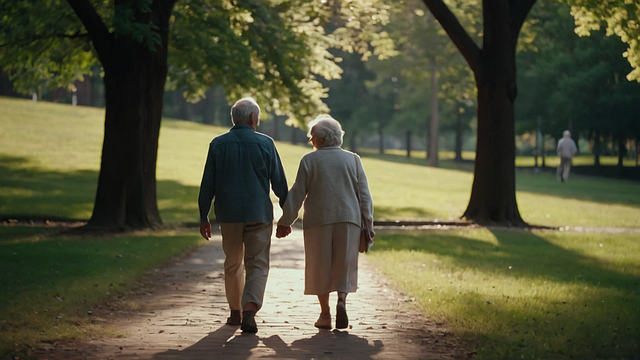In a world that’s more connected than ever, the paradox of loneliness among older adults remains a pressing concern. As families become more dispersed and societal structures shift, many elderly individuals find themselves facing the twilight years without the companionship they deserve.
Recently, the tragic death of an Oscar-winning actor and his wife in New Mexico brought this issue into sharp focus. Their passing, reportedly without immediate family nearby, serves as a poignant reminder of the vulnerabilities faced by many in later years. Unfortunately, this is not an isolated incident. Around the world, countless seniors live alone, and in some cases, their passing goes unnoticed for days or even weeks.
Cultural Shifts and the Western Family Dynamic
One of the major reasons for this widespread loneliness is the cultural shift in family structures, particularly in Western societies. Unlike in many Asian and Middle Eastern cultures, where multi-generational households are common, the Western emphasis on independence often results in children moving away for education, careers, or personal aspirations. While this offers opportunities for personal growth, it can also lead to emotional and physical distance between parents and their children.
For many elderly parents, the reality of living far from their loved ones can be difficult, especially when mobility or health issues arise. While some may maintain active social lives, others find themselves increasingly isolated, missing daily interactions and the warmth of family connections.
The Toll of Loneliness on Health
The impact of loneliness goes beyond emotional distress—it has significant health consequences. Studies have shown that chronic loneliness is linked to increased risks of heart disease, depression, and cognitive decline. Social isolation can be as harmful to health as smoking or obesity, making it a public health issue that needs urgent attention.

Bridging the Gap: How We Can Help
Addressing loneliness among the elderly requires a collective effort from families, communities, and policymakers. Here are some ways we can make a difference:
1. Encouraging Intergenerational Connections – Families should prioritize regular check-ins with elderly relatives, whether through visits, phone calls, or video chats. Teaching seniors to use technology can help them stay connected, even when family members live far away.
2. Community Engagement – Local organizations can create social programs tailored for seniors, such as book clubs, hobby groups, or fitness classes. Encouraging older adults to participate in these activities can help them build new friendships and feel more connected.

3. Volunteer Programs – Programs that match younger volunteers with seniors for companionship, daily assistance, or simple conversation can have a meaningful impact on both parties.
4. Policy and Advocacy – Governments and organizations should implement policies that promote social inclusion, provide accessible healthcare, and support initiatives aimed at reducing loneliness.
Final Thoughts
The stories of those who have faced loneliness serve as a call to action for all of us. While modern life may pull families in different directions, we must find ways to maintain meaningful connections with our aging loved ones. By fostering a culture of care, empathy, and engagement, we can ensure that our elderly population feels valued, supported, and never truly alone.


